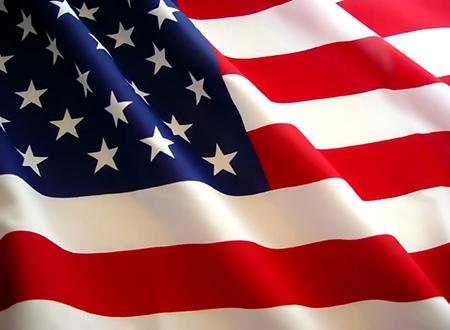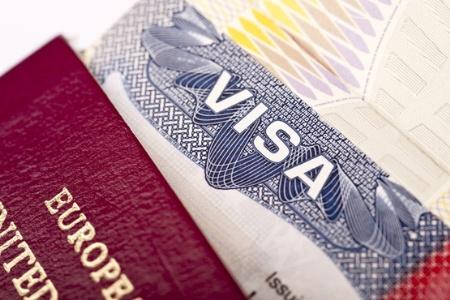 How do I choose a college or university?
How do I choose a college or university? Accreditation recognition.
Accreditation recognition.  Areas of study. Even the biggest schools do not prepare students for every career be sure the types of programs that you are interested in are offered by the schools that you are considering.
Areas of study. Even the biggest schools do not prepare students for every career be sure the types of programs that you are interested in are offered by the schools that you are considering. Location. Variations in climate and landscape are large in the United States.
Location. Variations in climate and landscape are large in the United States.  Type of institution. Institutions may be public, private, or religiously affiliated. They may be large or small, have many international students or only a few.
Type of institution. Institutions may be public, private, or religiously affiliated. They may be large or small, have many international students or only a few. Qualifications and research interests of faculty. A match with faculty interests is particularly important for graduate students.
Qualifications and research interests of faculty. A match with faculty interests is particularly important for graduate students. Facilities and special resources or programs.
Facilities and special resources or programs.  Admissions standards.
Admissions standards.  Ask schools that you have attended to submit official transcripts showing the courses you took.
Ask schools that you have attended to submit official transcripts showing the courses you took. Graduate programs are most interested in learning details about the applicant's desired area of study, their career goals, and how the program being applied for meets the applicant's specific academic needs.
Graduate programs are most interested in learning details about the applicant's desired area of study, their career goals, and how the program being applied for meets the applicant's specific academic needs. At the undergraduate level, the essay allows the admissions staff to gain a better feel for the applicant's individual personality and background. How are you different from other applicants? The essay may also provide a good place to discuss your interests and skills that are not fully described in other parts of the application.
At the undergraduate level, the essay allows the admissions staff to gain a better feel for the applicant's individual personality and background. How are you different from other applicants? The essay may also provide a good place to discuss your interests and skills that are not fully described in other parts of the application. When I apply to universities, what admission tests may I be expected to take?
When I apply to universities, what admission tests may I be expected to take? TOEFL. If English is not your native language, you must submit a Test of English as a Foreign Language (TOEFL) score. Many institutions require a minimum score of about 80 on the Internet-based (iBT) TOEFL, about 213 on the computer-based version of the TOEFL (a version of the test no longer offered), or about 550 on the paper-based version for both undergraduate and graduate students to enter their academic programs. A few schools may not require the TOEFL if you completed high school or college in the United States or if you graduated from a four-year, degree-granting institution where English is the language of instruction.
TOEFL. If English is not your native language, you must submit a Test of English as a Foreign Language (TOEFL) score. Many institutions require a minimum score of about 80 on the Internet-based (iBT) TOEFL, about 213 on the computer-based version of the TOEFL (a version of the test no longer offered), or about 550 on the paper-based version for both undergraduate and graduate students to enter their academic programs. A few schools may not require the TOEFL if you completed high school or college in the United States or if you graduated from a four-year, degree-granting institution where English is the language of instruction. SAT® Reasoning Test®. The SAT Reasoning Test may be required of undergraduate applicants. No standard score is required; results are weighed with secondary school grades and other elements of the undergraduate application.
SAT® Reasoning Test®. The SAT Reasoning Test may be required of undergraduate applicants. No standard score is required; results are weighed with secondary school grades and other elements of the undergraduate application. SAT Subject Tests. Each SAT Subject examination tests knowledge in a specific subject area. One or more may be required of some undergraduate applicants.
SAT Subject Tests. Each SAT Subject examination tests knowledge in a specific subject area. One or more may be required of some undergraduate applicants. GRE. Most graduate applicants are required to submit results on the Graduate Record Examination general test and sometimes subject tests as well. Some graduate programs require a minimum 450 verbal score on the general test; others may also have a 420 minimum required on the quantitative section. Minimum scores will vary from university to university. Some do not have minimums but will weigh scores with undergraduate grades and other elements of the graduate school application.
GRE. Most graduate applicants are required to submit results on the Graduate Record Examination general test and sometimes subject tests as well. Some graduate programs require a minimum 450 verbal score on the general test; others may also have a 420 minimum required on the quantitative section. Minimum scores will vary from university to university. Some do not have minimums but will weigh scores with undergraduate grades and other elements of the graduate school application. GMAT. Graduate applicants in business- and accountancy-related areas usually must take the Graduate Management Admission Test. (Applicants to some programs may have a choice between taking the GMAT and the GRE.) A minimum score of 500 is often required, with a score of at least 25 percent on the verbal portion. Again, requirements vary from program to program.
GMAT. Graduate applicants in business- and accountancy-related areas usually must take the Graduate Management Admission Test. (Applicants to some programs may have a choice between taking the GMAT and the GRE.) A minimum score of 500 is often required, with a score of at least 25 percent on the verbal portion. Again, requirements vary from program to program. When should I take university entrance exams?
When should I take university entrance exams? Where do I find information about the tests?
Where do I find information about the tests? The GMAT, is developed by the Graduate Management Admissions Council (GMAC), You can find test information as well as useful information about business studies in general by visiting their student site.
The GMAT, is developed by the Graduate Management Admissions Council (GMAC), You can find test information as well as useful information about business studies in general by visiting their student site.
 What should I do on the day of the test?
What should I do on the day of the test? What should I do if my test scores don’t arrive in this time frame?
What should I do if my test scores don’t arrive in this time frame? Who do I contact if I have score report problems or other questions on tests?
Who do I contact if I have score report problems or other questions on tests? Education is an investment in your future that can bring great returns. U.S. study offers more choices than any other educational system, allowing you to match your future plans closely with your curriculum.
Education is an investment in your future that can bring great returns. U.S. study offers more choices than any other educational system, allowing you to match your future plans closely with your curriculum. Planning
Planning Sources of Financial Aid
Sources of Financial Aid For More Information on Financial Aid Information
For More Information on Financial Aid Information Planning
Planning College and university application fees
College and university application fees Fees for standardized tests
Fees for standardized tests Tuition
Tuition Required fees
Required fees Travel expenses
Travel expenses Housing and meals
Housing and meals Books and supplies
Books and supplies Health insurance
Health insurance Clothing, recreation, incidental expenses
Clothing, recreation, incidental expenses Everyone applying for U.S. non-immigrant visas, including all visas granted for the purpose of U.S. study, is required to demonstrate an intention to return to their home country.
Everyone applying for U.S. non-immigrant visas, including all visas granted for the purpose of U.S. study, is required to demonstrate an intention to return to their home country. The burden of proof is on the applicant to prove ties to the home country and establish what is called non-immigrant intent.
The burden of proof is on the applicant to prove ties to the home country and establish what is called non-immigrant intent. Have a few sentences in mind that express how you intend to use your degree or research at home after your finish your program
Have a few sentences in mind that express how you intend to use your degree or research at home after your finish your program Bring copies of deeds to any property (land, house, apartment, store, business) that you or your family owns in your home country
Bring copies of deeds to any property (land, house, apartment, store, business) that you or your family owns in your home country Bring bank statements for any accounts that you or your family maintain in your home country
Bring bank statements for any accounts that you or your family maintain in your home country If you have an employer who intends to employ you when you return home, bring a letter from that employer
If you have an employer who intends to employ you when you return home, bring a letter from that employer For more information from the U.S. Department of State about the requirement to demonstrate ties to your home country click here
For more information from the U.S. Department of State about the requirement to demonstrate ties to your home country click here Timing Your Entry
Timing Your Entry Planning Ahead to Avoid Travel Complications
Planning Ahead to Avoid Travel Complications Get the name, address, and telephone number of the staff person at your U.S. university to contact in case of a travel delay or an emergency, and carry this with you during your trip. Also carry contact information for a person at home and for or another organization that could provide you with support if needed, such as an educational mission or sponsoring agency.
Get the name, address, and telephone number of the staff person at your U.S. university to contact in case of a travel delay or an emergency, and carry this with you during your trip. Also carry contact information for a person at home and for or another organization that could provide you with support if needed, such as an educational mission or sponsoring agency. Pack Smart
Pack Smart Getting Off the Ground
Getting Off the Ground In the Air
In the Air At the Airport
At the Airport Settling In
Settling In
 How many international students are in the United States?
How many international students are in the United States? What types of support services will be available to me on campus?
What types of support services will be available to me on campus? Can I keep a halal diet in the United States?
Can I keep a halal diet in the United States? What kinds of housing do international students live in?
What kinds of housing do international students live in? What are U.S. teaching methods? What will my professors expect from me?
What are U.S. teaching methods? What will my professors expect from me? What if I find I need help with my English?
What if I find I need help with my English? What types of health costs can I expect with insurance ? What can I do to minimize them?
What types of health costs can I expect with insurance ? What can I do to minimize them? How can I find a mosque in the United States?
How can I find a mosque in the United States?